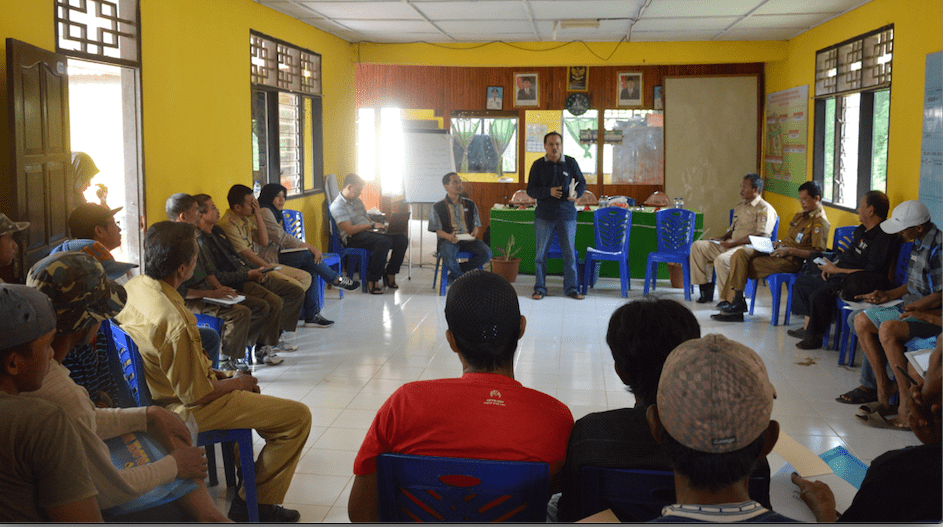Focusing on facilitation: Issues and challenges of capacity development in Indonesia’s social forestry reforms
Versions
- 2019-04-25 (2)
- 2019-04-25 (1)

As the Indonesian government sets a target to allocate 12.7 million ha of state forest land for social forestry in 2019, one of the most crucial [and overlooked] issues is the extent of capacity, knowledge, skills, and engagement of social forestry facilitators and the extension workers that support the government in meeting their targets on social forestry. In this short paper, I seek to reorient the discussion towards the main issues and challenges of social forestry capacity development in Indonesia. On the one hand, there are some promising achievements made by the government in the wake of social forestry policy design and implementation, particularly in their ability to expand the scope of targeted areas for social forestry designation, as well as the increase in the numbers of community business group established. On the other hand, however, there are some challenges that are evident. Coordination within the ministry remains a major barrier, and extends to coordination problems across and between sub-national governments. Furthermore, engagement with the private sectors and involvement of NGOs remains lacking. And finally, the distribution of social forestry facilitators and extension workers across the numerous social forestry sites in Indonesia, as well as the overall capacity development needs among facilitators continues to be a major hindrance in meeting targets. I conclude by highlighting that more attention needs to be devoted to the role and capacity of facilitators, and furthermore, that the government needs to address these challenges through various institutional reforms and methods on social forestry training, as well as developing more rigorous training modules for community facilitators.
Badan Pusat Statistik. (2017). Penghitungan dan Analisis Kemiskinan Makro Indonesia Tahun 2017. Jakarta, Indonesia
World Bank. (2014). Indonesia: avoiding the trap. Jakarta: the World Bank Office
Copyright (c) 2019 Forest and Society

This work is licensed under a Creative Commons Attribution 4.0 International License.
This is an open access journal which means that all contents is freely available without charge to the user or his/her institution. Users are allowed to read, download, copy, distribute, print, search, or link to the full texts of the articles in this journal without asking prior permission from the publisher or the author. This is in accordance with the BOAI definition of open access.
Submission of an article implies that the work described has not been published previously (except in the form of an abstract or as part of a published lecture or academic thesis), that it is not under consideration for publication elsewhere, that its publication is approved by all authors and tacitly or explicitly by the responsible authorities where the work was carried out, and that, if accepted, will not be published elsewhere in the same form, in English or in any other language, without the written consent of the Publisher. An article based on a section from a completed graduate dissertation may be published in Forest and Society, but only if this is allowed by author's(s') university rules. The Editors reserve the right to edit or otherwise alter all contributions, but authors will receive proofs for approval before publication.
Forest and Society operates a CC-BY 4.0 © license for journal papers. Copyright remains with the author, but Forest and Society is licensed to publish the paper, and the author agrees to make the article available with the CC-BY 4.0 license. Reproduction as another journal article in whole or in part would be plagiarism. Forest and Society reserves all rights except those granted in this copyright notice







